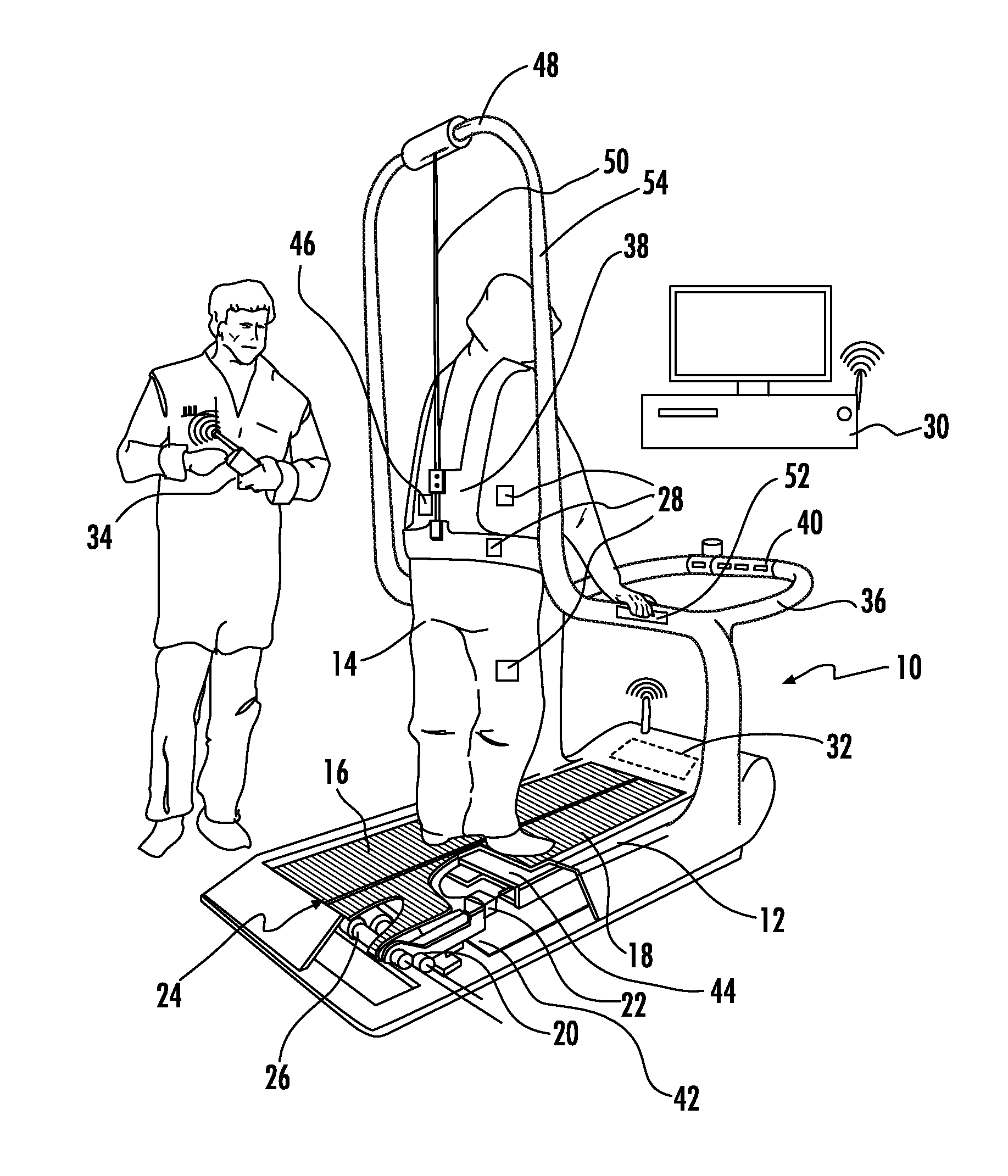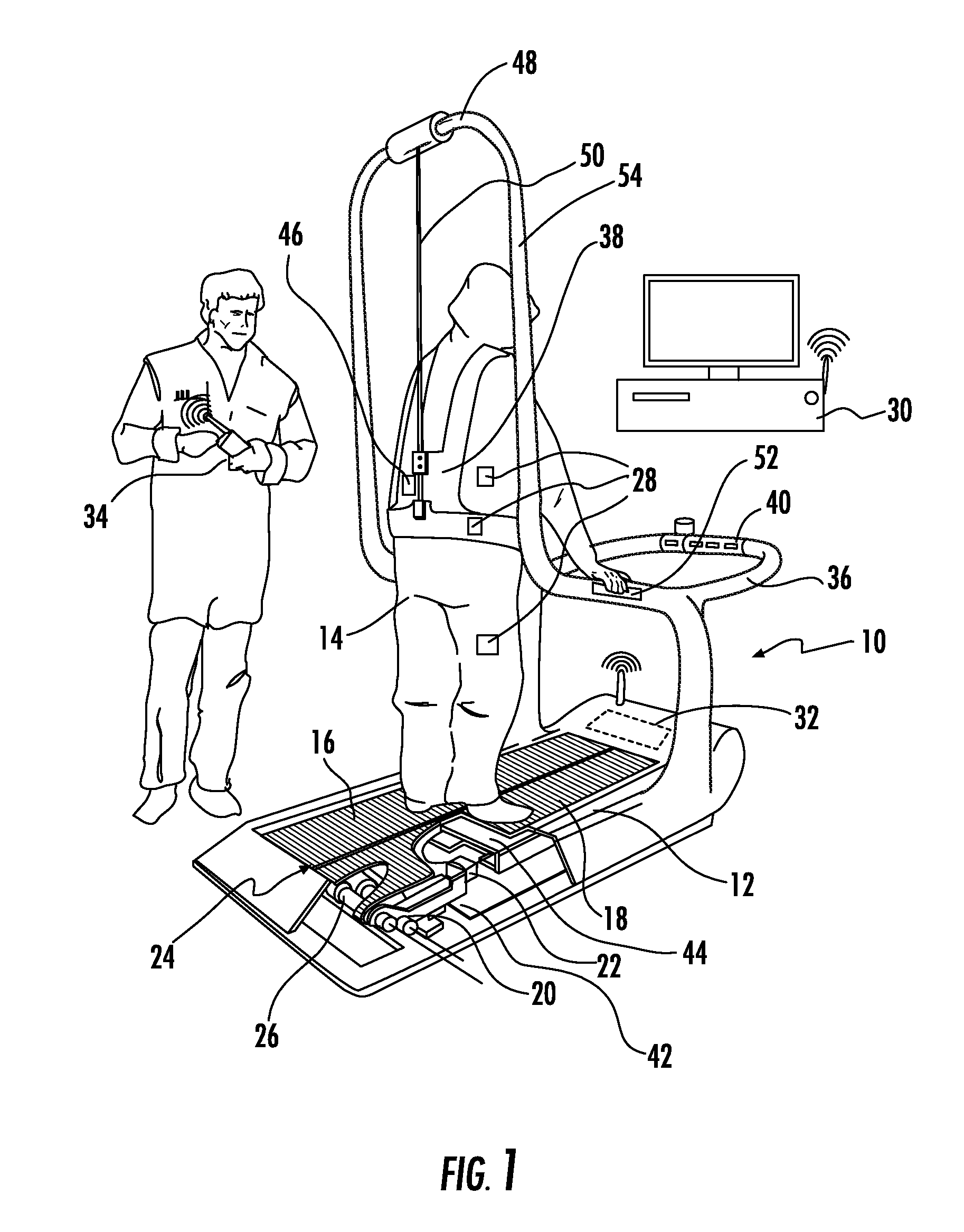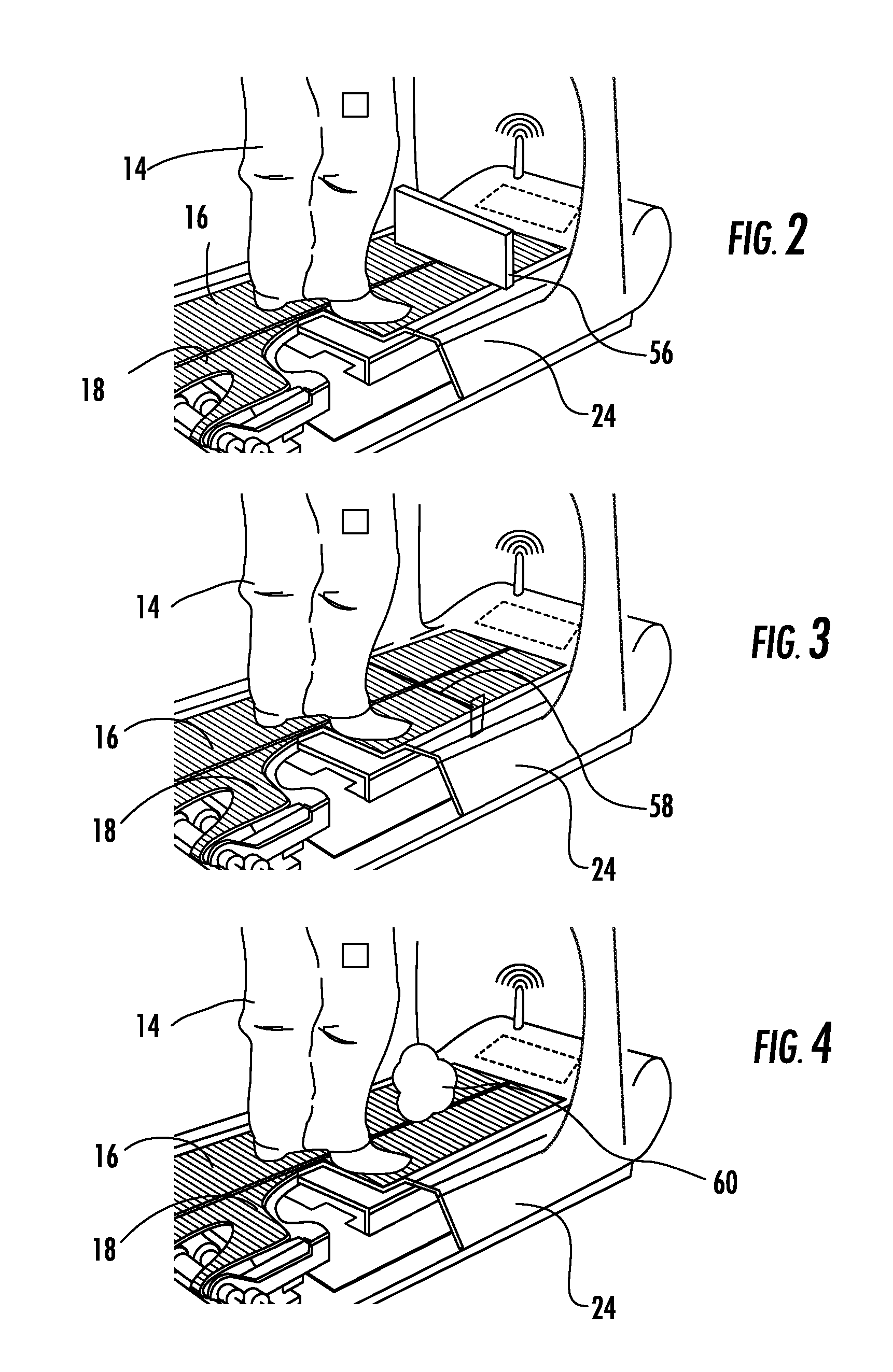Training system and method using a dynamic perturbation platform
a training system and platform technology, applied in the field of human performance, sports medicine and medical rehabilitation, can solve the problems of limited perturbation training systems and methods, serious injury causes, and limited training methods
- Summary
- Abstract
- Description
- Claims
- Application Information
AI Technical Summary
Benefits of technology
Problems solved by technology
Method used
Image
Examples
Embodiment Construction
[0089]The present invention includes a unique method that enables individuals, particularly older adults, to rapidly learn how to modify motor performance and improve recovery rates after being subjected to a disturbance event or perturbation that required a response, such as a step response. The method of the present invention achieves a reduction in the probably of falling by repeated exposure to a realistic disturbance event which serves as targeted and effective motor skill training. As seen in FIG. 7, the recovery percentage increases exponentially over time when they are subjected to trials of fall prevention training. Thus, the method of the present invention provides an invaluable rehabilitation tool for an individual for training how to recover from a large disturbance event, such as a large postural perturbation. To carry out this method, the present invention employs a cost-effective apparatus that can be widely used to reduce the incidence of falling.
[0090]The present in...
PUM
 Login to View More
Login to View More Abstract
Description
Claims
Application Information
 Login to View More
Login to View More - R&D
- Intellectual Property
- Life Sciences
- Materials
- Tech Scout
- Unparalleled Data Quality
- Higher Quality Content
- 60% Fewer Hallucinations
Browse by: Latest US Patents, China's latest patents, Technical Efficacy Thesaurus, Application Domain, Technology Topic, Popular Technical Reports.
© 2025 PatSnap. All rights reserved.Legal|Privacy policy|Modern Slavery Act Transparency Statement|Sitemap|About US| Contact US: help@patsnap.com



